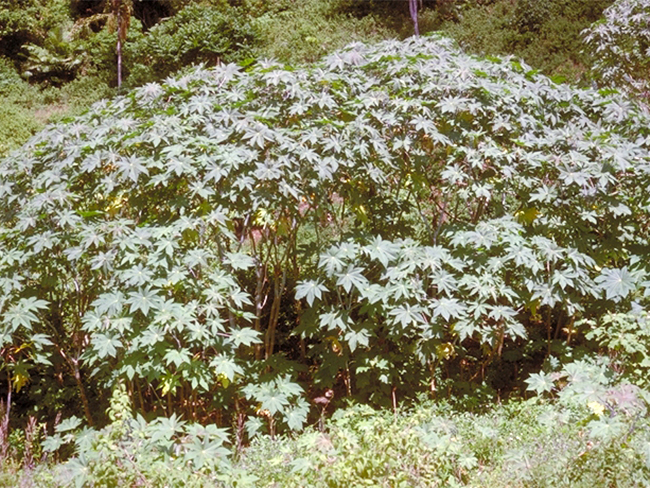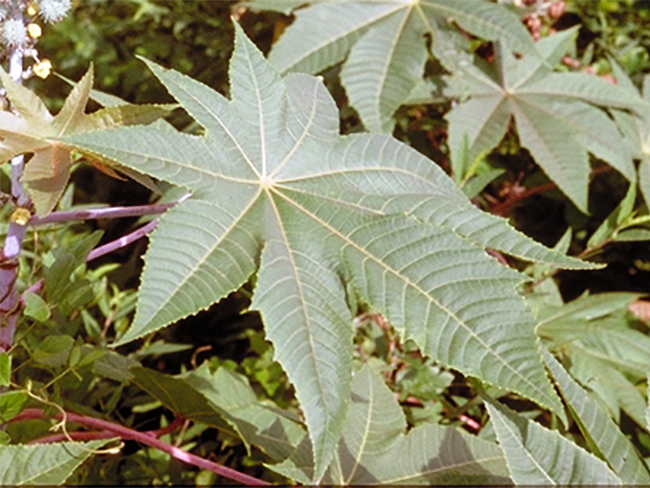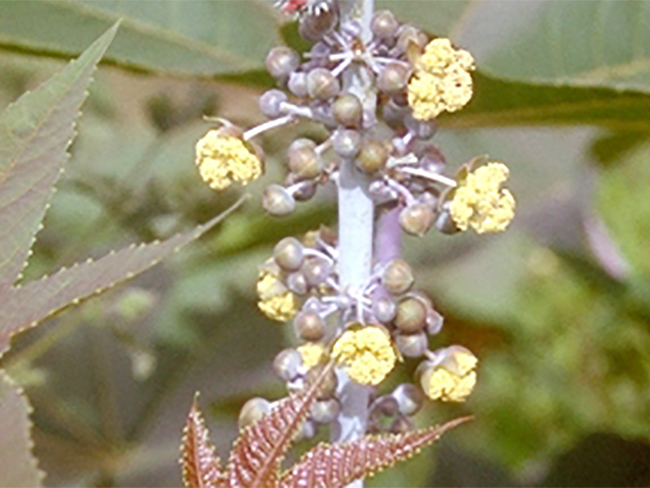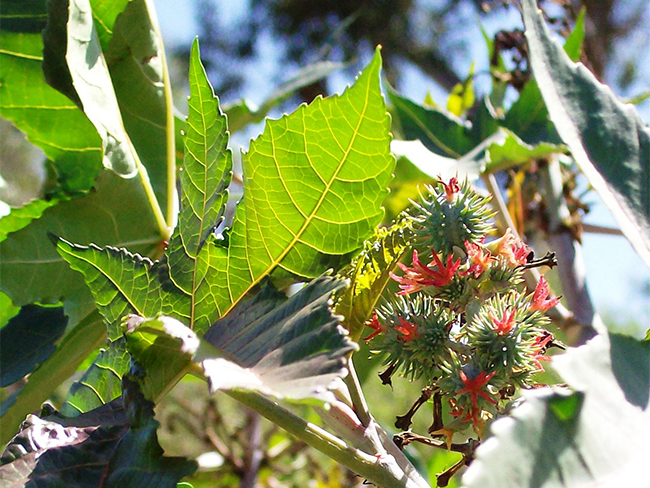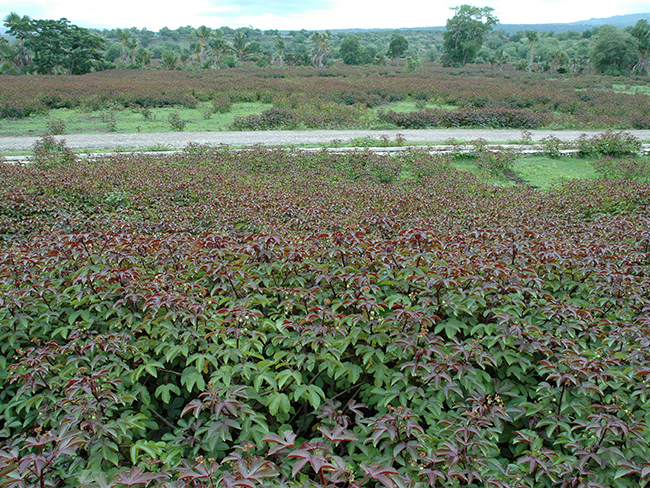Castor oil plant
Scientific name: Ricinus communis
Declaration status: Class B
Castor oil plant is native to Asia and Africa. It was probably first introduced as a medicinal plant. Castor oil plant is now found in all Australian mainland states, generally along creek lines and in disturbed areas. Dense colonies may develop, particularly following heavy rains or flooding.
In the NT castor oil plant has mainly been confined to the arid centre and the Victoria River District.
Impact
Castor oil plant can have all of the following impacts:
- invade pastures, rarely grazed
- seeds contain an extremely poisonous substance called ricin
- ricin in seeds is toxic to horses, cattle, sheep, pigs, poultry and humans
- the consumption of two to eight seeds can lead to death in humans.
Identification
You should use this as a guide. There may be other plants or weeds that look similar.
- 2 to 3m tall, branching shrub with hollow stems and branches
- change in colour from a pale green-red to grey when mature
- glossy leaves, maturing from dark red-brown to green, arranged alternately along branches
- distinctive unpleasant odour when crushed
- divided into seven to nine triangular toothed lobes with a central vein
- flowers are red-green colour that form as crowded, rigid spikes in the forks of upper branches
- egg-shaped fruit, about 2.5cm long
- covered in red or green soft spines, each lobe contains one seed.
To find out more, get the castor oil plant weed note on the Department of Lands, Planning and Environment website.
If you are unsure, contact the Weed Management Branch.
Similar looking plants
The following plant species look similar to castor oil plant:
Bellyache bush (Jatropha gossypiifolia) is widespread across northern Australia.
Find out more information about bellyache bush
Physic nut (Jatropha curcas) also naturalised in northern Australia, has leaf margins and leaf stalks without gland-tipped hairs and petals that are yellow to green.
Control
Caution should be taken when attempting any control and removal of this weed. Wear protective clothing, gloves and eye protection before starting control work.
Chemical control
The best time to treat castor oil plant is from December to April. Below is a list of treatment methods that can be used.
| Chemical and concentration | Rate | Situation, method and notes |
|---|---|---|
|
2, 4-D amine 625 g/L Various trade names | 320ml / 100L |
Seedling (individuals or infestation) + adult (infestation): Foliar spray - apply when actively growing For boom rate contact the Weed Management Branch |
|
Triclopyr 600 g per litre Various trade names | 1L / 60L (diesel) |
Seedling (individuals or infestation) + adult (infestation): Foliar spray - apply when actively growing For boom rate contact the Weed Management Branch |
It is vital that follow-up works are carried out to control seedling recruitment and regrowth after a site has been treated.
Treatment areas must be revisited no less than four weeks after spraying, but prior to seed-set.
Seeds in the soil can remain viable for at least four years, and up to seven years under dry conditions, so follow-up control to kill any regrowth or new germinants should be done for at least four years after treatment.
Areas should be checked for two years after eradication. If left uncontrolled, seedlings and regrowth may develop into a bigger problem than the initial infestation.
Non-chemical control
Hand pulling and grubbing
Weeds, including their roots, are physically pulled out of the ground by hand or using hand tools.This is an effective method of control for individual weeds and recent outbreaks that haven’t released seeds yet, but it requires a lot of labour.
Spread
Castor oil plant seeds can be spread by flooding and mud from vehicles or machinery.
It can spread in garden waste and soil, and is often abundant along watercourses and floodplains.
Spread prevention
You can prevent the spread of castor oil plant by doing all of the following:
- map infestations to help develop a management plan
- control minor infestations, isolated outbreaks or seedlings first
- designate wash down areas and actively work to prevent contamination of clean areas
- monitor areas that you have treated and watch for re-infestations.
Give feedback about this page.
Share this page:
URL copied!
